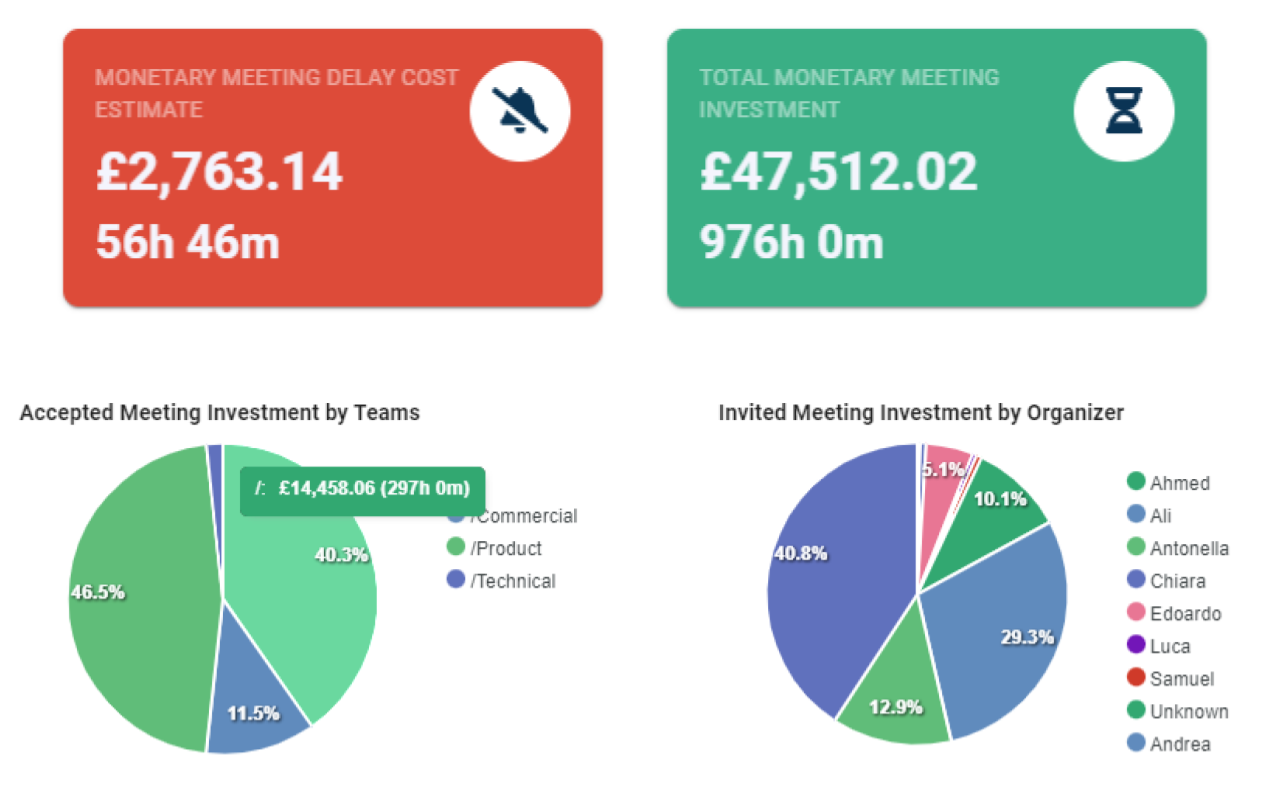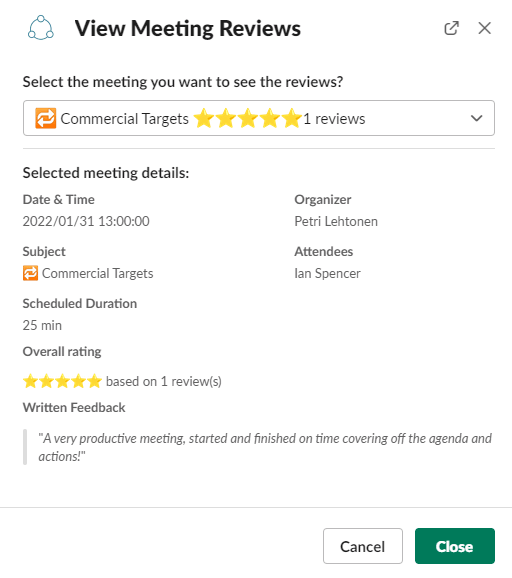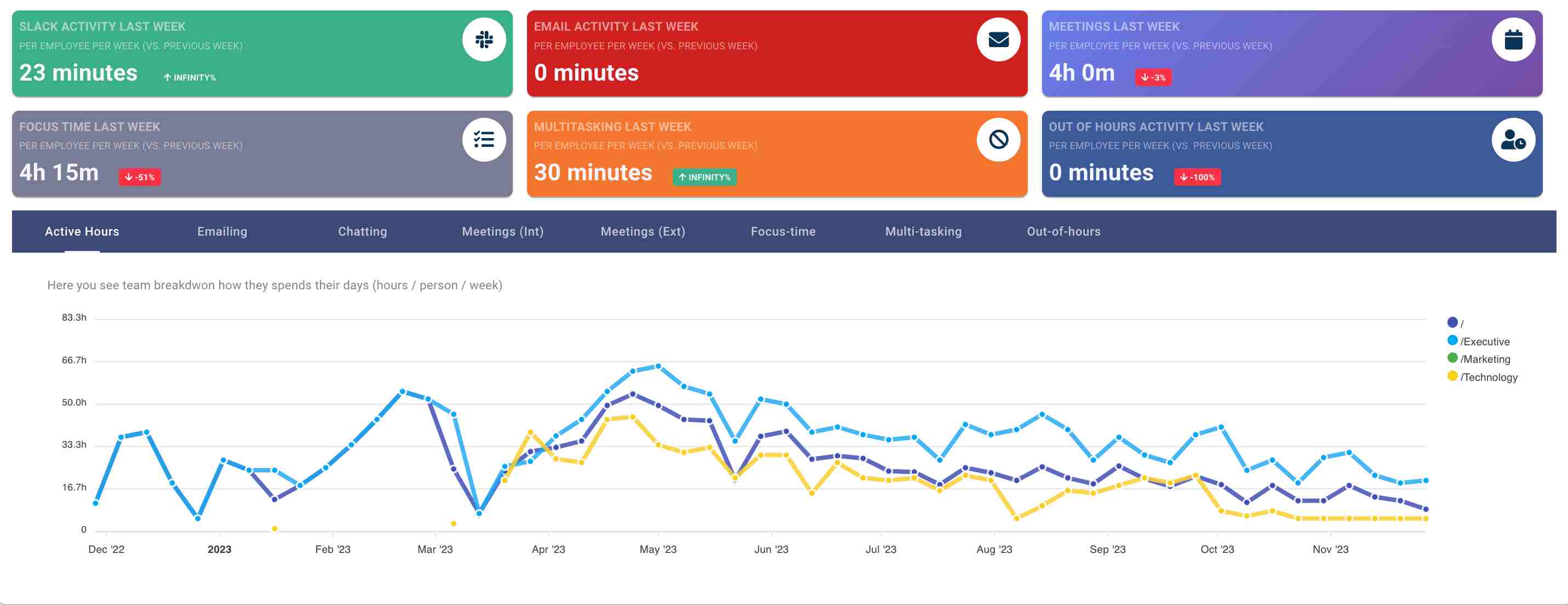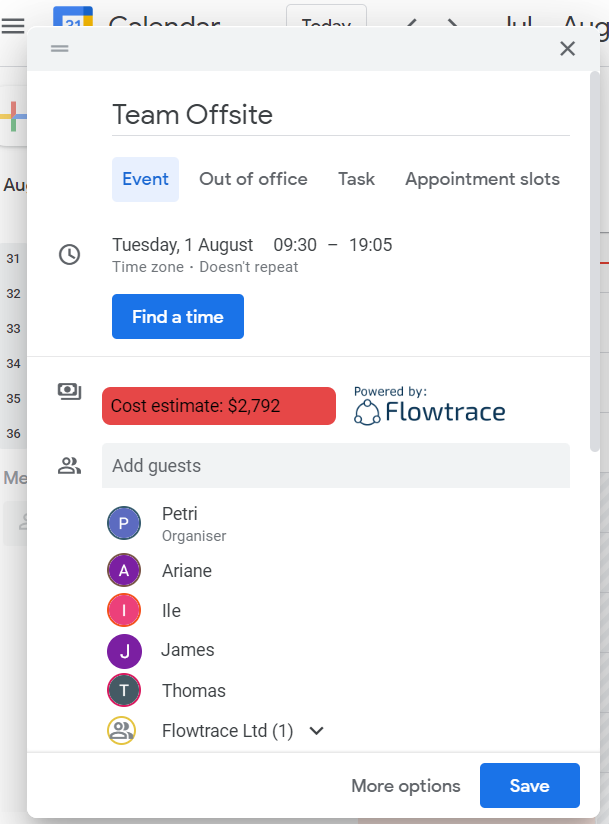Strategic Meeting Management: Implementation & Importance
Enhance productivity and decision-making with strategic meeting management. Learn key components, best practices, and solutions for effective...
Learn how to fix unproductive meetings and enhance organizational productivity with strategic planning, effective meeting practices, and innovative tools. Drive success with Flowtrace analytics.
Meetings are a staple of corporate culture, intended to foster collaboration, brainstorming, and decision-making. However, not all meetings achieve these objectives effectively. Unproductive meetings can drain energy, dilute focus, and consume valuable resources, ultimately impacting an organization's bottom line.
Studies suggest that middle managers spend over 35% of their time in meetings, while upper management can spend up to 50%. Despite this substantial time investment, an alarming percentage of these meetings are considered unproductive by participants. The reasons range from lack of preparation and unclear objectives to poor participant engagement and ineffective follow-up actions.
For companies aiming to thrive in a competitive marketplace, addressing the inefficiencies of unproductive meetings is imperative. By refining meeting practices, organizations can significantly enhance productivity, save costs, and foster a more engaged and motivated workforce.
Unproductive meetings often share several detrimental characteristics that can significantly impair a company's operational efficiency:
The tangible impact of poorly conducted meetings can be significant, ranging from lost productivity to employee dissatisfaction. Several instances highlight the consequences of meeting inefficiencies:
A report by Atlassian suggests that poorly organized meetings can lead to billions of dollars in productivity loss annually as employees spend time in meetings that are unproductive and often unnecessary.

According to a study from the University of North Carolina’s Kenan-Flagler Business School, excessive meetings can contribute to employee burnout and reduced job satisfaction, impacting overall team morale and individual performance,
These examples underline the necessity for companies to reevaluate and redesign their meeting practices to enhance efficiency and productivity. By addressing the common pitfalls of meeting management, organizations can reclaim valuable time and foster a more engaged and productive workforce.
Effective meeting management begins long before participants enter the room or log into a virtual meeting platform. Strategic planning plays a crucial role in ensuring that meetings are productive and focused. Here are three key aspects of strategic planning that can significantly improve the outcomes of your meetings:
A well-defined agenda is essential for any successful meeting. It acts as a roadmap, guiding discussions and ensuring that the meeting stays on track. The agenda should clearly outline the topics to be discussed, the objectives of each topic, and the expected outcomes.

This helps participants understand the purpose of the meeting and what needs to be accomplished. By setting a clear direction, the agenda minimizes the risk of the meeting veering off into tangential discussions and ensures that every moment spent in the meeting is directed towards a productive end.
The effectiveness of a meeting often hinges on having the right people in the room. Every participant should have a clear role or something valuable to contribute to the proceedings.
This not only makes the meeting more dynamic but also ensures that all necessary perspectives are considered in the decision-making process. When selecting participants, consider the topics on the agenda and invite only those whose input is essential for the topics at hand. This approach not only streamlines the meeting but also respects the time of those who might not need to be involved.
Preparation is key to the success of any meeting. Distributing relevant materials ahead of time allows participants to come prepared to contribute effectively. This might include briefing documents, reports, data analyses, or pre-reads that provide background information necessary for informed discussion.
Additionally, setting expectations about what each participant should bring to the meeting — whether it's specific data, solutions to problems, or strategic ideas — can further enhance the productivity of the meeting. This preparatory step ensures that time during the meeting is spent on discussion and decision-making rather than on bringing people up to speed.
By focusing on these strategic planning elements, organizations can significantly improve the efficiency and effectiveness of meetings. This not only leads to better decision-making but also enhances overall organizational productivity.
Optimizing meeting practices is pivotal for enhancing productivity and engagement among team members. Here are several effective practices that can elevate the quality and outcomes of your meetings:
Punctuality in starting meetings is fundamental in demonstrating respect for participants' time and setting the tone for a disciplined work environment. Starting on time reinforces the importance of the meeting and encourages participants to be punctual, minimizing delays and disruptions.
It also helps maintain the schedule, ensuring that all agenda items are covered without rushing, which can compromise decision quality. Punctuality in meetings can contribute significantly to a culture of respect and efficiency within an organization.
The facilitator plays a critical role in steering the meeting effectively. Their responsibilities include guiding the discussion, ensuring that the agenda is followed, and keeping the meeting on track. A skilled facilitator can manage the flow of conversation to prevent digressions and make sure that every topic receives adequate attention.
They also ensure that all participants have an opportunity to contribute, balancing the dynamics within the room to avoid domination by more vocal attendees. This role can sometimes be rotated among team members to foster a sense of ownership and engagement across the board.
Engagement is key to productive meetings, and there are several techniques to ensure active participation:
By implementing these practices, meetings can transform from routine administrative procedures to dynamic sessions that genuinely contribute to organizational goals. These approaches not only improve the efficiency of meetings but also enhance the overall collaborative culture of an organization.
In the modern workplace, technology plays a key role in enhancing the efficiency and effectiveness of meetings. By utilizing advanced tools for meeting management and leveraging digital platforms, organizations can streamline their meeting processes and improve overall productivity.
Collaboration platforms and meeting efficiency software are essential tools that help in organizing and conducting more effective meetings. These tools often include features such as:
Digital tools can significantly reduce time wasted in meetings by:
Effective meetings don't end when the participants leave the room or log off the virtual platform; the follow-through on agreed-upon actions is where the real productivity begins. Proper post-meeting actions can significantly influence the overall success of the meeting outcomes. Here are some crucial steps to ensure that meetings are not only productive in the moment but also in driving results afterward.
Meeting minutes are a critical document for capturing the essence of what was discussed and agreed upon during the meeting. They should be clear, concise, and distributed promptly after the meeting to all participants and even those who were unable to attend but need to be informed. Good minutes should include:
These records are not just a recap of the meeting but serve as a reference document that can help keep the team aligned and accountable, and ensure continuity over multiple meetings.
The real test of a meeting's effectiveness is the execution of action items that come out of it. Assigning clear responsibilities and deadlines for these actions during the meeting is crucial. Managers and leaders should track these actions to completion, ensuring that nothing falls through the cracks. This might involve regular check-ins or updates in team meetings to report on progress, which can help maintain momentum and demonstrate the importance of completing these tasks.
Gathering feedback on meeting effectiveness can lead to continuous improvement in how meetings are conducted. Using surveys or quick polls post-meeting can provide insights into what participants found useful or lacking. This feedback should be collected shortly after the meeting to capture immediate perceptions and experiences.

Questions could include:
This feedback is invaluable for refining meeting formats, adjusting agendas, and improving overall meeting management to better serve the organization's needs.
To ensure meetings consistently contribute to organizational success, it's essential to adopt long-term strategies for meeting optimization. These strategies focus not only on improving individual meetings but also on embedding effective meeting practices into the company's culture.
Investing in training and resources dedicated to meeting management can significantly elevate the quality of meetings. This includes:
Integrating a routine review of meeting effectiveness into the organizational culture is crucial for continuous improvement. This can be achieved through:

Flowtrace is uniquely equipped to enhance the effectiveness of meetings by providing in-depth analytics and tools designed to optimize team collaboration and meeting efficiency.
Flowtrace provides detailed meeting analytics on meeting frequency, duration, and participation. These insights help organizations identify patterns and potential inefficiencies in their meeting practices. By understanding which meetings are taking up the most time and which ones are the least attended, companies can start to make informed decisions about which meetings to keep, which to restructure, and which to eliminate.

Integrating with a company’s existing collaboration tools, Flowtrace delivers actionable insights into how employees spend their time. It tracks not just the time spent in meetings but also the time spent on collaborative tasks outside of meetings. This holistic view allows managers to better understand work patterns and tailor their strategies to maximize productivity.

An essential feature of Flowtrace is its meeting cost calculator. This tool helps organizations quantify the financial impact of meetings by calculating the cost of time spent in various meetings across different teams. By putting a dollar figure on meeting time, it highlights the potential savings that could be achieved by reducing unnecessary meetings or making them more efficient.

By utilizing these tools, Flowtrace aids organizations in not just tracking and analyzing meeting effectiveness but also in making tangible improvements. This leads to more streamlined meetings, better time management, and ultimately, a more productive work environment.
As business needs evolve, so too should meeting practices. Continuous improvement and adaptation are key to ensuring that meetings remain an asset, rather than a liability, for greater productivity and collaboration. By applying these strategies and utilizing Flowtrace to foster a meeting culture that values effective time management, organizations can significantly enhance their operational efficiency and employee satisfaction.
Enhance productivity and decision-making with strategic meeting management. Learn key components, best practices, and solutions for effective...
Learn how to optimize meeting lengths for maximum productivity and efficiency. Discover the ideal meeting duration, cost implications, and strategies...
Optimize your organization's meetings with Strategic Meeting Management. Learn how to transform meetings from time-draining activities into strategic...